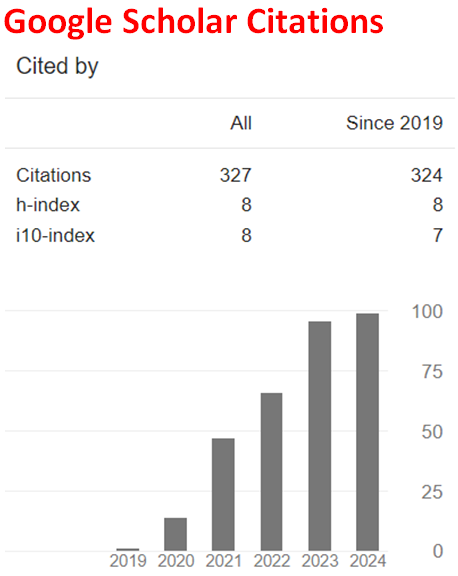The Chemistry of Lindo and Fages Colour Tests
Abstract
Lindo test for strychnine identification is based on the reaction of the alkaloid with potassium chlorate in the presence of sulphuric acid. Fages identified chlorates and bromates using strychnine in nitric acid. In fact, it is the same reaction but with different strong acid, and the product to be identified being interchanged. The reaction series occurring in these tests has not being described. We provide the electron flow from the alkaloid to the complex oxidation product resulting from the powerful oxidation properties of chloric acid.
Downloads
References
F. Sánchez-Viesca and R. Gómez, On the mechanism of uric acid oxidation with lead dioxide and with alkaline hydrogen peroxide, Indian J. Adv. Chem. Sci. 8(3) (2020), 78-80.
F. Sánchez-Viesca and R. Gómez, The mechanism of nitric acid degradation of the C-glycoside Aloin to Aloe-emodin, Am. J. Chem. 10(1) (2020), 1-5.
F. Sánchez-Viesca and R. Gómez, Formation mechanism of the colored compounds derived from Eserine (Physostigmine), World J. Org. Chem. 8(1) (2020), 1-4. https://doi.org/10.12691/wjoc-8-1-1
F. Sánchez-Viesca and R. Gómez, On the mechanism of the Treumann test for theobromine, Int. J. Chem. Sci. 3(6) (2019), 46-49.
F. Sánchez-Viesca and R. Gómez, The chemistry of the Folin test for uric acid, Am. J. Chem. 9(3) (2019), 91-94.
E. Marchand, Sur un nouveau caráctère spécifique de la strychnine, Journal de Pharmacie et de Chimie, 3rd. series 4(1) (1843), 200-201.
E. Marchand, New test for strychnine, Am. J. Pharm. 15 (1844), 300-301.
K. Paech and M. B. Tracey, Modern Methods of Plant Analysis, Vol. 4, B. T. Cromwell, The Alkaloids, III, The detection of strychnine, 2, Colour Tests, p. 483, Berlin: Springer, 1980.
C. A. Johnson, A. D. Th. Jones, Drug Identification, London: The Pharmaceutical Press, l966, p.49.
D. Lindo, Tests for strychnine, Assoc. Medical Journal 4(201) (1856), 966. https://doi.org/10.1136/bmj.s3-4.201.966
J. Fages, Recherches des chlorates et des bromates au moyen de la strychnine, Bull. des Sciences Pharmacologiques 4 (1901), 15.
J. Fages, Recherche des chlorates et des bromates au moyen de la strychnine, Ann. Chim. Anal. Paris 5 (1900), 441-442.
J. Fages, Detection of chlorates and bromates, The Pharmaceutical Journal (London) 12 (1901), 191.
J. Fages, Chlorates and bromates, detection by means of strychnine, Proceedings of the American Pharmaceutical Association 49 (1901), 762.
J. D. Mann, Forensic Medicine and Toxicology, London: Griffin, 1893, p. 548.
A. Bruylants, J. C. Jungers and J. Verhulst, Química Mineral, Barcelona, Spain: Teide, 1965, p. 101.
R. W. Hoffmann, Classical Methods in Structure Elucidation of Natural Products, Zürich, Switzerland: Wiley-VHCA, 2018; 19: 193-197. https://doi.org/10.1002/9783906390819
E. Wiberg and A. F. Holleman, Inorganic Chemistry, San Diego, USA: Academic Press, 2001, p. 444.
C.T. Rawcliffe and D. H. Rawson, Principles of Inorganic and Theoretical Chemistry, London: Heinemann, 1969, p. 310.
F, D. de Körösy, An Approach to Chemistry, London: Pitman & Sons, 1969, p. 192.
M. Pesez and P. Poirier, Méthodes et Réactions de l’Analyse Organique, vol. 3, Paris: Masson, 1954, Halochromie, p. 227.

This work is licensed under a Creative Commons Attribution 4.0 International License.


